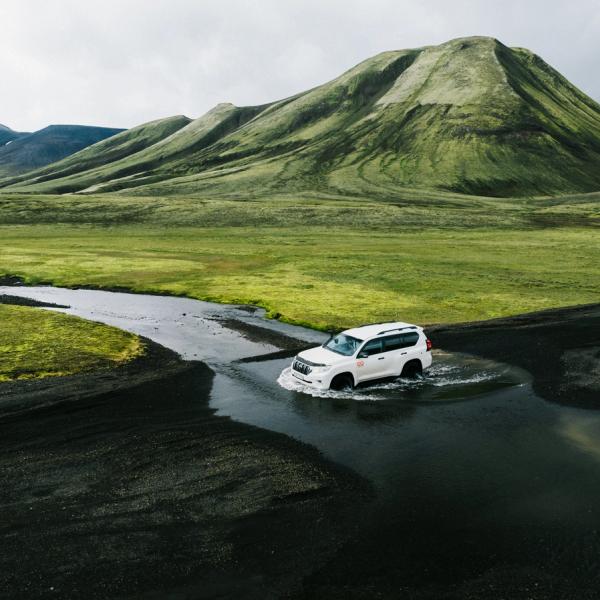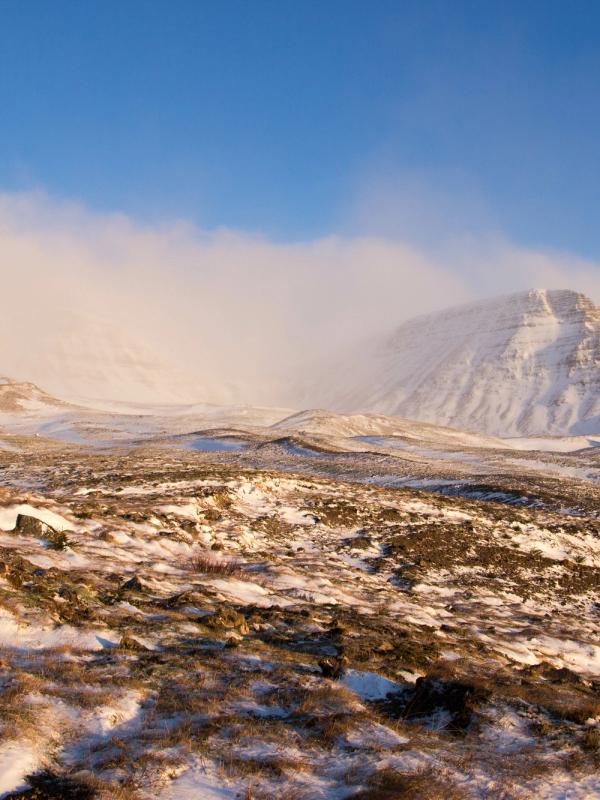
Complete Guide to Hiking Mt. Esja in Reykjavik: Trails, Tips, and Best Time to Visit
Discover the ultimate guide to hiking Mt. Esja in Reykjavik, Iceland. Learn about trails, tips, and how to prepare for this iconic adventure.
Ask any of the staff at Go Campers for a hiking recommendation near Reykjavik, and Mt. Esja will be it. We’ve all hiked it at one point or another – it’s a bit of a rite of passage for locals. The mountain features several well-marked trails that wind their way up through stunning landscapes, each offering its own unique challenge and perspective of Reykjavik below.
In this article, we’ll cover everything you need to know about hiking Mt. Esja in Reykjavik, one of the city’s best outdoor activities. Let’s go!
What is Mt. Esja?
Mt. Esja, standing at 914 meters tall (2,998 feet), is one of Iceland’s most iconic natural landmarks and a must-visit destination for outdoor enthusiasts. Located just outside Reykjavik, this majestic mountain range is the go-to destination for day hikes near the city, popular with both locals and tourists.
Known for its scenic trails, breathtaking views of the city, and varying levels of difficulty, Mt. Esja offers something for everyone. Whether you’re a total beginner or a seasoned hiker, you’ll find a route that’s just right for you.
The name "Esja" actually refers to a specific section of the mountain range, though many people use it to describe the entire area. The most popular peak to hike is Þverfellshorn, which rewards you with panoramic views of Reykjavik and the vast Atlantic Ocean.
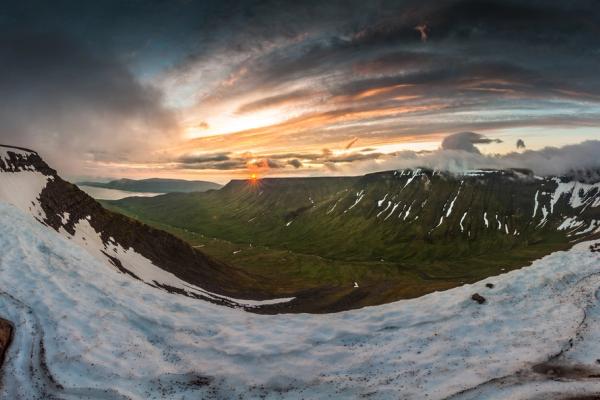
Where is Mt. Esja Located?
Mt. Esja is located about 10 km (6.2 miles) northeast of Reykjavik, making it one of the easiest outdoor adventures to access from the capital.
From Reykjavik, you can spot Mt. Esja across Faxaflói Bay—it’s as much a part of the city’s skyline as Hallgrímskirkja or Harpa. The range stretches along the coastline, blending volcanic rocks, lush moss, and sharp peaks into Iceland’s stunning natural landscape.
How to Get to Mt. Esja from Reykjavik
Getting to Mt. Esja from Reykjavik is simple and can be done in a variety of ways.
By Car: If you’ve still got your campervan while in Reykjavik, that makes things very easy.
- Drive along Route 1 (Ring Road) heading northeast.
- Look for signs for "Esjurætur," which is the main hiking base for Mt. Esja.
- The journey takes about 20-30 minutes by car, and there is a free parking lot at the trailhead.
By Bus: Dropped off your campervan and spending a bit of time in the city? Time to hop on the bus.
- From Hlemmur, you can catch Bus #57 towards Akranes and get off at the Esja trailhead.
- The total trip takes around 40-50 minutes, depending on bus schedules.
Top Hiking Trails on Mt. Esja
Mt. Esja offers a range of hiking trails, each with varying difficulty levels. From beginner-friendly paths to steep, rocky climbs, the mountain has something for everyone.
Beginner Trails
Trail to Steinn:
- Distance: ~3 km (1.8 miles) one way
- Difficulty: Easy to Moderate
- Time: 1-1.5 hours to Steinn, 2-3 hours round trip
The hike to Steinn (a large rock) is the most popular route for beginners. This section of the trail is well-marked and offers gentle inclines, making it ideal for those new to hiking. Steinn is often considered the "stopping point" for those who aren't ready for a steep ascent. There’s a guestbook here to sign.
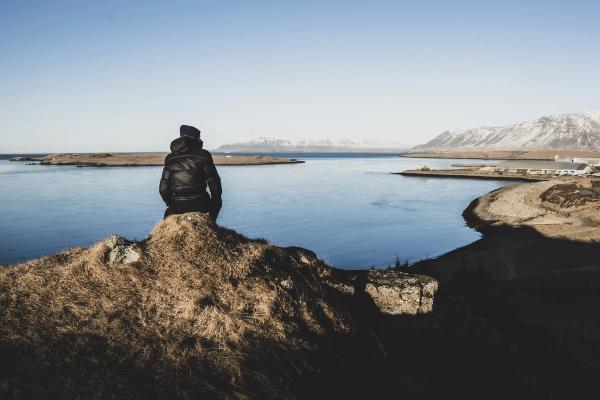
Advanced Trails
Trail to Þverfellshorn (Summit Route):
- Distance: 6 km (3.7 miles) or 3km from Steinn
- Difficulty: Intermediate to Advanced
- Time: 3-4 hours round trip
This is the most challenging route on the mountain, as it requires climbing a steep ridge. There is a rope-assisted section near the summit, which can be slippery in wet conditions. This trail is only recommended for experienced hikers.
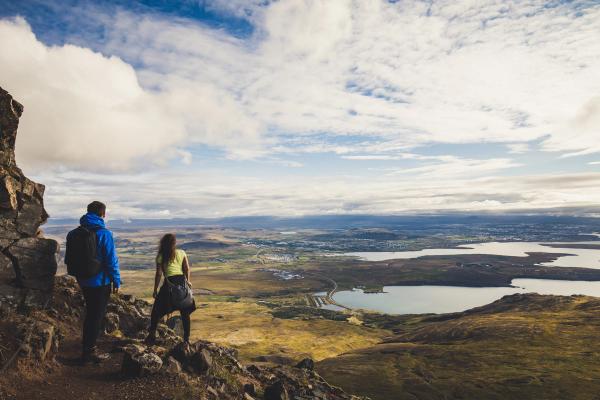
How Difficult is the Hike?
The challenge of the hike depends on your route.
If you stop at Steinn, it’s a relatively easy hike that almost anyone can handle. It takes about 1 to 1.5 hours to reach Steinn, and the gradual incline is perfect for beginners or those who just want a leisurely outdoor experience.
If you push onward to Þverfellshorn, things get a lot tougher. The terrain becomes rocky and uneven, and the incline gets much steeper. You’ll need a good level of fitness to reach the summit—and be prepared for the weather, which can change quickly as you climb higher.
What to Pack for a Hike on Mt. Esja
To ensure a safe and comfortable hike, pack the following essentials:
- Waterproof Hiking Boots (for rocky and uneven terrain)
- Weather-Resistant Jacket (Icelandic weather is unpredictable)
- Warm Layers (even in summer)
- Water Bottle (there are no water refill points)
- Snacks and Energy Bars
- First Aid Kit (for minor cuts or scrapes)
- Trekking Poles (optional, but useful on steep inclines)
- Gloves and a Hat (essential for colder weather)
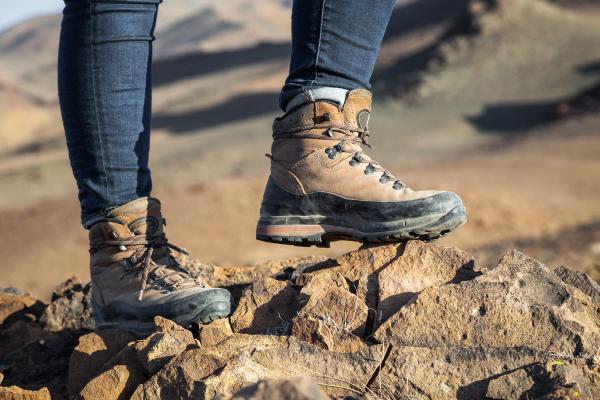
Best Time of Year to Hike Mt. Esja
The best time to hike Mt. Esja is during the warmer months between May and September. During this period, the weather is more stable, and the trails are free from snow, making the hike safer and more enjoyable. Each season offers a unique experience, so it’s important to know what to expect throughout the year.
- Summer (June to August) is undoubtedly the best time to hike Mt. Esja. The weather is relatively warm, with average temperatures ranging from 10 to 15°C (50-59°F). The days are long, with extended daylight hours that provide ample time to complete your hike – even later in the evening to have it all to yourself. The trails are typically dry, making them safer and more accessible for hikers of all experience levels.
- Spring (May) can also be a good time to hike, but it’s important to check trail conditions before you go. Some of the higher-elevation trails may still have snow, and paths can be muddy or slippery. However, spring hikes offer the chance to see Iceland's natural landscape in bloom, making for a visually stunning experience.
- Autumn (September) is another great time for hiking Mt. Esja. While temperatures begin to drop, the crisp autumn air can make hiking more comfortable. The mountain is bathed in the warm hues of autumn foliage, offering stunning views along the trails. Be prepared for shorter daylight hours and cooler conditions, as well as the possibility of early snowfall.
- Winter (October to April) is the most challenging time to hike Mt. Esja. Snow and ice cover much of the trail, making it hazardous and difficult to navigate. Hikers who attempt to climb Mt. Esja in winter should have experience with ice hiking and bring the necessary gear, such as crampons and ice axes. For most people, it’s best to avoid hiking during these months unless accompanied by an experienced guide.
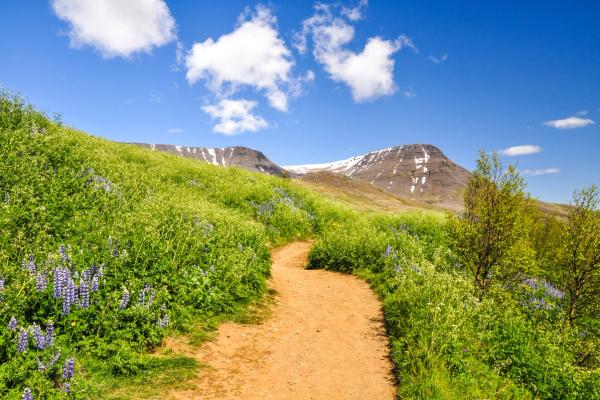
Safety Tips for Hiking Mt. Esja
- Check Weather Forecasts: Icelandic weather is unpredictable. Avoid hiking in fog, heavy rain, or high winds. Head to en.vedur.is for the latest updates.
- Start Early: The weather changes quickly, so start your hike early in the day.
- Stick to Marked Trails: Avoid taking shortcuts, as some paths lead to dangerous cliffs.
- Inform Someone: Let someone know your hiking plan, especially if you are hiking solo. Leaving your travel plan with Safe Travel is always a good idea.
- Watch for Loose Gravel: Some sections have slippery, loose gravel. Use trekking poles for support.
Why Mt. Esja Should Be on Your Hiking Bucket List
Mt. Esja offers an unforgettable hiking experience with stunning views of Reykjavik and the Icelandic coastline. This iconic Reykjavik mountain provides just the right amount of challenge for beginners and advanced hikers alike, and is a great excursion into some beautiful and underrated Icelandic nature.
Its proximity to the city makes it a convenient day trip, and the chance to see Iceland’s wild beauty up close is a once-in-a-lifetime experience. If you’re planning to spend some time in Reykjavik but are still looking for a great way to experience the surrounding nature, be sure to add hiking Mt. Esja to your bucket list.

